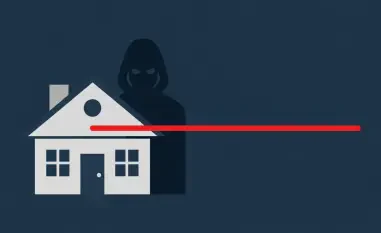What happens when the lifeline of business communication turns into a backdoor for cybercriminals? Right now, thousands of organizations worldwide are at risk as a devastating zero-day vulnerability in FreePBX, a popular open-source phone system platform, is being actively exploited. This flaw, known as CVE-2025-57819, allows attackers to seize control of critical systems with alarming ease. Picture sensitive calls intercepted, data stolen, or entire networks held for ransom—all through a tool meant to streamline communication. This is not a distant threat; it’s a clear and present danger demanding immediate focus.
Why Hackers Are Zeroing in on Phone Systems
Voice communication platforms like FreePBX, built on the Asterisk server, are integral to businesses, call centers, and service providers. Their widespread adoption—powering millions of calls daily—makes them a lucrative target for malicious actors. With the discovery of CVE-2025-57819, rated at a maximum CVSS severity score of 10.0, hackers have found a way to bypass security and access the Administrator Control Panel (ACP) without credentials. Since August 21 of this year, systems exposed to the public internet have faced relentless attacks, signaling a sharp rise in threats to communication infrastructure.
This isn’t merely about technical glitches; it’s a calculated assault on operational integrity. Cybercriminals exploit these systems not just for data theft but as entry points into broader networks. The trend of targeting PBX platforms for ransomware and fraud schemes, such as premium billing scams, has surged, turning a once-trusted tool into a potential liability for unsuspecting organizations.
The Devastating Reach of the FreePBX Vulnerability
At the heart of this crisis lies a critical flaw in the commercial “endpoint” module of FreePBX, impacting versions 15 prior to 15.0.66, 16 prior to 16.0.89, and 17 prior to 17.0.3. Poor sanitization of user-supplied data enables attackers to gain unauthorized access to the ACP, manipulate databases, and even execute remote code, often escalating to root-level privileges. Sangoma, the developer behind FreePBX, has confirmed active exploitation on systems lacking proper IP filtering or access control lists.
The fallout can be catastrophic. Compromised systems show telltale signs like altered configuration files such as “/etc/freepbx.conf,” suspicious scripts named “/var/www/html/.clean.sh,” or unusual log entries including POST requests to “modular.php.” Some attacks even route calls to extension 9998, a red flag unless previously configured. Such breaches could lead to stolen customer data, system outages, or integration into larger malicious campaigns.
Real-world impact is already evident. Reports indicate small businesses and mid-sized call centers, reliant on FreePBX for daily operations, have suffered unauthorized access, with some facing downtime costing thousands in lost productivity. This vulnerability isn’t just a number on a security report—it’s a direct threat to financial stability and trust.
Voices of Concern from Cybersecurity Experts
Industry leaders are raising urgent alarms about the severity of this flaw. Benjamin Harris, CEO of watchTowr, a cybersecurity firm, describes FreePBX as “low-hanging fruit” for initial access brokers and ransomware gangs. “These platforms have been in the crosshairs for years, exploited for everything from fraud to network infiltration,” Harris explains. “If there’s even a hint of compromise, disconnect the system immediately to limit damage.”
Echoing this urgency, the U.S. Cybersecurity and Infrastructure Security Agency (CISA) has added CVE-2025-57819 to its Known Exploited Vulnerabilities (KEV) catalog. Federal agencies are mandated to apply fixes by September 19 of this year, a deadline that underscores the critical nature of the threat. The collective message from experts and authorities is unambiguous: inaction invites disaster, and the window to respond is shrinking fast.
How the Flaw Disrupts Business Operations
Beyond technical exploits, the ripple effects of this vulnerability strike at the core of business functionality. Imagine a call center unable to process customer inquiries because its phone system has been hijacked, or a company’s confidential client discussions leaked to competitors. These scenarios are becoming reality for organizations that fail to secure their FreePBX deployments, with some already reporting unauthorized database changes and unknown users like “ampuser” appearing in logs.
The financial toll is staggering. Cybersecurity studies estimate that downtime from such breaches can cost businesses an average of $9,000 per minute for critical systems. When combined with potential ransom demands or legal liabilities from data leaks, the stakes couldn’t be higher. This flaw transforms a communication tool into a weapon against its users, disrupting trust and stability in equal measure.
Immediate Actions to Shield Your FreePBX System
Safeguarding a FreePBX system against this active threat demands prompt and precise steps. Start by upgrading to the latest patched versions—15.0.66, 16.0.89, or 17.0.3—as Sangoma has rolled out emergency fixes for CVE-2025-57819. Delaying this update is not an option; it’s the first line of defense against ongoing exploitation.
Next, restrict public access to the ACP by enforcing IP filtering or access control lists, ensuring only trusted networks can connect. Simultaneously, monitor systems for compromise indicators: scrutinize configuration files for unauthorized edits, analyze Apache and Asterisk logs for anomalies, and scan databases for unfamiliar entries. If a breach is suspected, isolate the affected system immediately to prevent further intrusion while conducting a thorough investigation.
Finally, consider broader security enhancements. Deploying firewalls, enabling two-factor authentication where possible, and regularly auditing access logs can fortify defenses against future threats. Protecting communication infrastructure isn’t just a technical task—it’s a critical business priority that cannot be overlooked in today’s threat landscape.
Reflecting on a Crisis Averted
Looking back, the rapid response to the FreePBX zero-day flaw by many organizations likely prevented widespread devastation. Sangoma’s swift release of patches, coupled with CISA’s decisive inclusion of CVE-2025-57819 in its critical catalog, provided a lifeline for vulnerable systems. Expert warnings, like those from Benjamin Harris, underscored the urgency that drove action across industries.
Yet, the journey didn’t end with a patch. Moving forward, businesses must adopt a proactive stance—regularly updating software, tightening access controls, and investing in cybersecurity training to recognize early signs of compromise. Exploring advanced threat detection tools and collaborating with security professionals can further bolster resilience. The lesson is clear: in an era of relentless cyber threats, vigilance remains the strongest shield for communication systems.













